New riots over police shooting raise the question: What is it about St. Louis?

For the past four nights in St. Louis, peaceful daytime protests over the acquittal of a former police officer charged with the fatal shooting of a black motorist in 2011 have degenerated into violent clashes with police, resulting in more than 100 arrests.
St. Louis Mayor Lyda Krewson announced Tuesday that in anticipation of a fifth evening of protests, she would postpone scheduled town hall events where she was expected to discuss various issues — including crime and the police. The images of broken glass, protesters dousing themselves with milk to counteract police pepper spray, and defiant demonstrators facing off against officers clad in riot gear evoked memories of the unrest that unfolded on the streets of nearby Ferguson just three years ago.
Related slideshow: Protests erupt in St. Louis after ex-officer’s acquittal >>>
In the wake of Ferguson, protests over police shootings in cities including Chicago, Baltimore, New York and Minneapolis made clear that the problems between police and the black community, in particular, exist well beyond Ferguson. But the clashes this week in St. Louis suggest that racial problems run deep in this former slave state.
“It is clear to me that what we are seeing and feeling is not only about this case. And I’m also clear that the root cause of this is not protesters, nor really police,” wrote Krewson in an open letter explaining her decision to cancel Tuesday’s town halls. “What we have is a legacy of policies that disproportionately impact people along racial and economic lines. This is not an opinion, this is supported by stacks of numbers. This is institutional racism.”
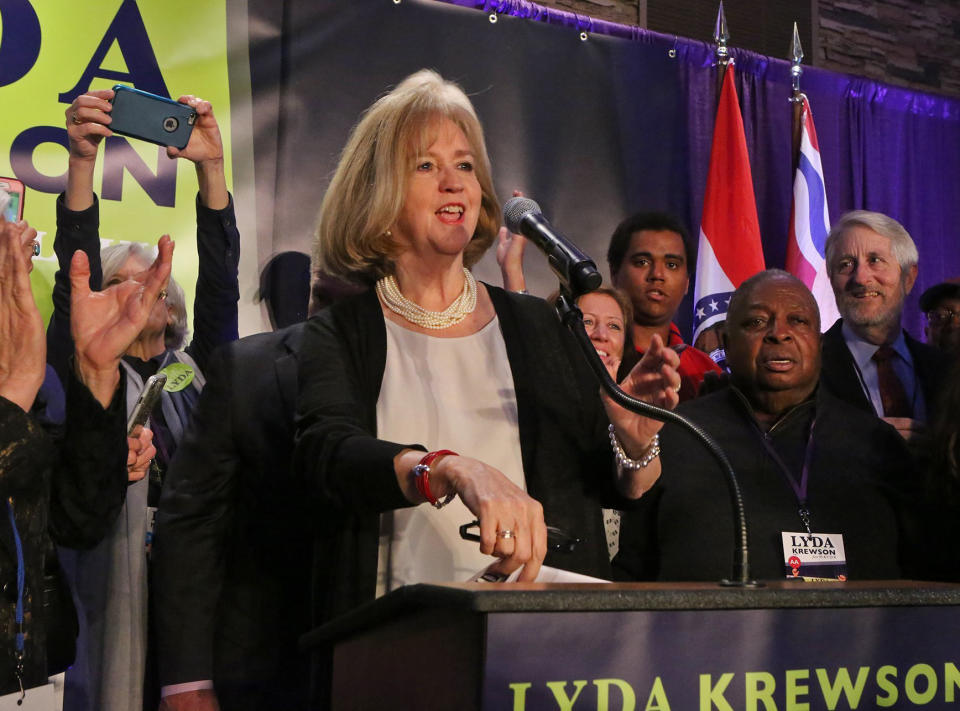
A study published this summer by 24/7 Wall Street named St. Louis the 10th most segregated city in America, with 39.3 of the city’s black residents living in predominantly black neighborhoods. The study also found a poverty rate of 29.9 percent among African-Americans in St. Louis, compared with a white poverty rate of 8.5 percent.
According to the study, the roots of St. Louis’s racial divide can be traced back to the 1950s, with the construction of the notorious Pruitt-Igoe towers, which the authors call “one of the most famously disastrous cases of racially segregated government housing.”
Abandoned by most white residents after racial discrimination in public housing was banned with the Civil Rights Act of 1964, Pruitt-Igoe succumbed to crime and neglect until it was demolished in 1972.
Though it’s been more than a half century since the Civil Rights Act was enacted, some state and local officials continue to push policies that hark back to Missouri’s segregated past.
A 2016 report from the state attorney general’s office found that black drivers in Missouri were 75 percent more likely to be pulled over than white drivers. This spring Missouri Gov. Eric Greitens, a Republican, signed a bill making it harder for businesses to be sued for racial discrimination. The bill was introduced by Republican state Sen. Gary Romine, whose own “rent-to-own” furniture company was sued by a former employee who claimed that he was regularly subjected to racial slurs from his supervisor and that there was a map hanging on a wall inside the store where someone had drawn a circle around a majority black neighborhood with the message “do not rent.”
Together they prompted the NAACP to issue its first-ever travel advisory for Missouri, warning “African American travelers, visitors and Missourians to pay special attention and exercise extreme caution when traveling throughout the state.” Derrick Johnson, CEO of the national organization, termed the conditions in Missouri “unconscionable” and “simply unacceptable in a progressive society.”
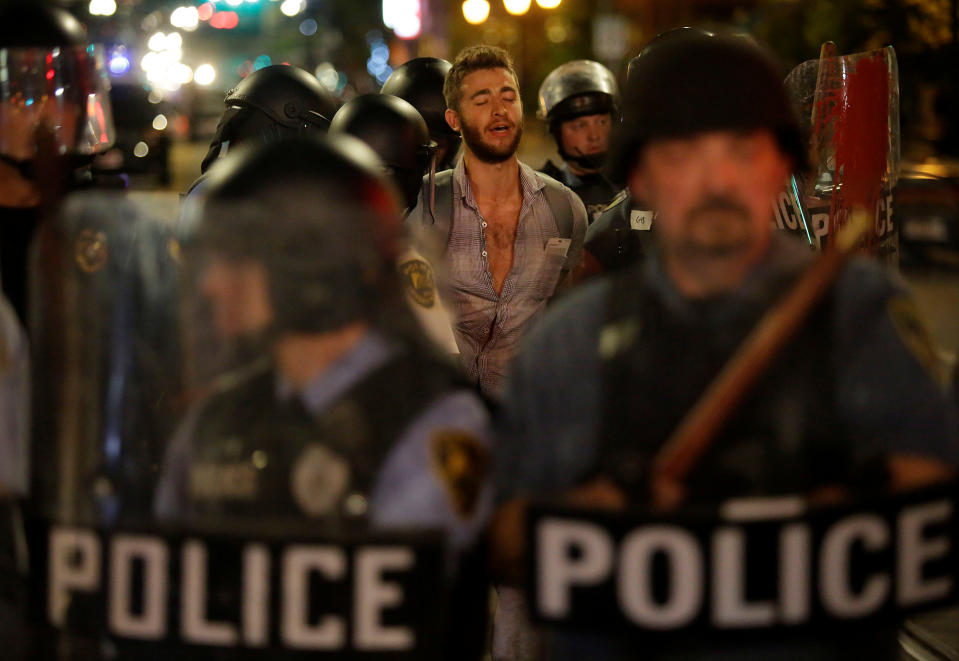
Not even police officers are exempt from the racial divisions that exist throughout Missouri and in St. Louis in particular.
Last year, the Ethical Society of Police — which was created in 1968 by black St. Louis police officers in response to racial bias within the St. Louis Metropolitan Police Department — released a report (PDF) outlining the pervasive problems of discrimination that officers of color continue to face at the department today.
For example, while the demographics of St. Louis are pretty evenly split — 47 percent Caucasian, 47 percent African-American — the report notes that 63 percent of the St. Louis Metropolitan Police Department is Caucasian, 34 percent is African-American, and just 3 percent (a whopping 42 employees) is Asian, Hispanic, Latino or another race.
The racial disparities grow increasingly more stark by rank: According to the report, as of Feb. 15, 2016, 75 percent of the department’s lieutenants, captains, majors, and colonels were white. African-Americans, on the other hand, made up 24 percent of these commander positions, while just 1 percent were officers of Asian, Hispanic, Latino or other ethnic backgrounds. Similar, and even more drastic, discrepancies were noted in the racial makeup of various specialized units within the department.
According to the report, “These biases have played an unfair role in discipline, promotions, and transfers.”
“If the department can’t seem to manage racial tensions and issues inside itself, what does that predict for how well they can manage those tensions outside on the street?” asked John Chasnoff, a longtime police reform advocate with the Coalition Against Police Crimes and Repression in St. Louis.
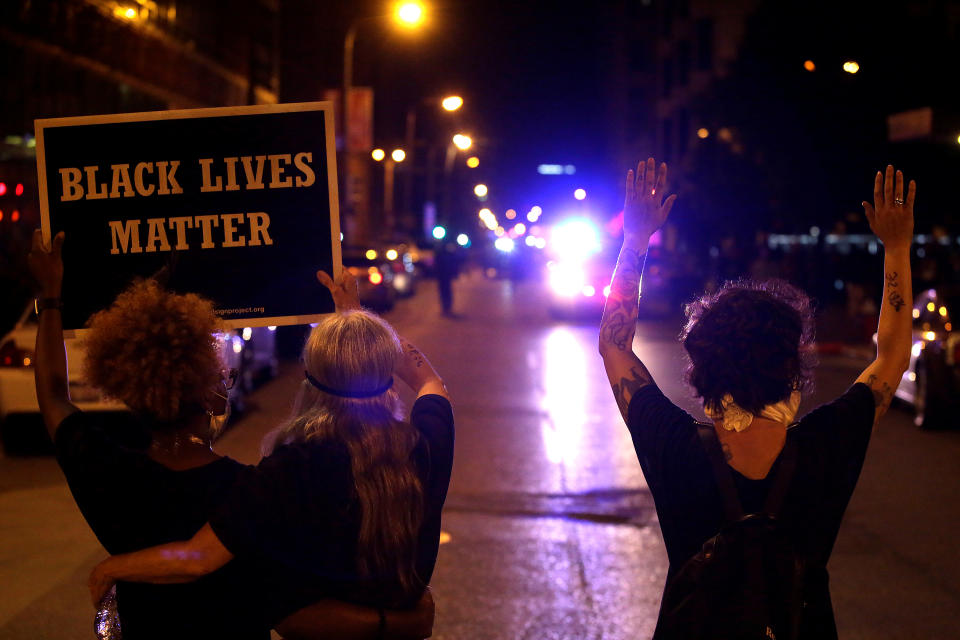
At the urging of both the Ethical Society of Police and many members of the public, Krewson oversaw the retirement of the city’s police chief, Sam Dotson, on her first day in office this April.
“To her credit, we pushed and we got a very open process for selecting the new chief,” said Chasnoff, referring to Krewson’s appointment of a citizens’ advisory committee to give the public a say in the search for a new police chief. “So that’s a good thing, but it’s taking longer than just the mayor deciding who to hire.”
In the meantime, interim Chief Lawrence O’Toole has already started to make his mark, pushing for St. Louis police officers to be armed with high-power rifles and overseeing more than 100 arrests during protests over the not-guilty verdict last weekend in the murder trial of former St. Louis police officer Jason Stockley.
“We’re in control, this is our city and we are going to protect it,” O’Toole said at a press conference Monday.
In the wake of the Michael Brown shooting in Ferguson, and the police response to subsequent protests, various investigators and research groups descended upon the small St. Louis suburb, learning that the police in Ferguson were just one small part of a patchwork of municipal police departments scattered throughout the broader St. Louis area.
A report (PDF) released in April 2015 on problems with policing in the St. Louis region by the nonprofit Police Executive Research Forum concluded, “The fragmentation of policing is inefficient, undermines police operations, and makes it difficult to form effective law enforcement partnerships to combat crime locally and regionally.”
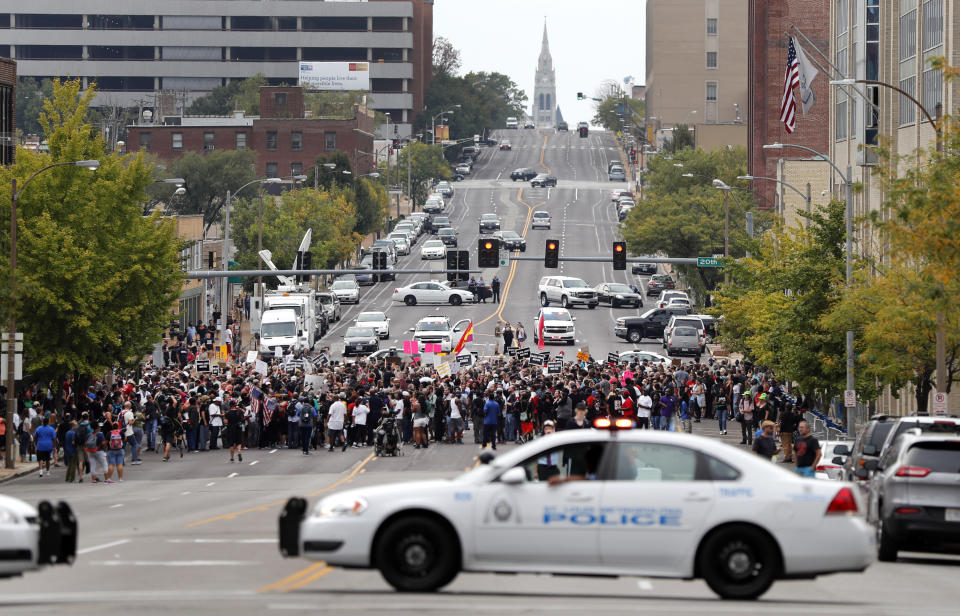
Chasnoff noted an additional unique factor about the St. Louis municipal police department, which, after 152 years under state jurisdiction, came under local control in 2013.
“The St. Louis police department isn’t fully integrated into local government yet,” Chasnoff said. “I think there’s a history in the department of lack of accountability that goes way back.”
Richard Rosenfeld, a criminology professor at the University of Missouri-St. Louis, disagrees.
Rosenfeld said that while he certainly thinks there is long-standing tension between minority communities in St. Louis and the local police departments, “I don’t think that tension is necessarily any greater in St. Louis than it is in any number of other places.
“Tension tends to be concentrated in disadvantaged minority communities,” he added, pointing to cities like Milwaukee and Minneapolis as other examples.
Rosenfeld and four of his colleagues published a study in 2015 that analyzed police shootings in St. Louis between 2003 and 2012. The study found that the frequency of shootings in a given neighborhood was not predicted by racial composition or economic status, but rather by the level of violent crime — but the correlation was not what one would expect. Instead, it was the least violent areas that tended to have the most police shootings.
“In neighborhoods where violence is not exceptionally high, officers are not all that experienced in dealing with tense individuals on the street,” Rosenfeld explained. “We think those incidents are more likely to end in police shooting rather than de-escalation.”
“In more violent neighborhoods,” on the other hand, “police are more experienced.”
This analysis, he suggests, helps explain what happened in the 2014 shooting of Michael Brown in suburban Ferguson.
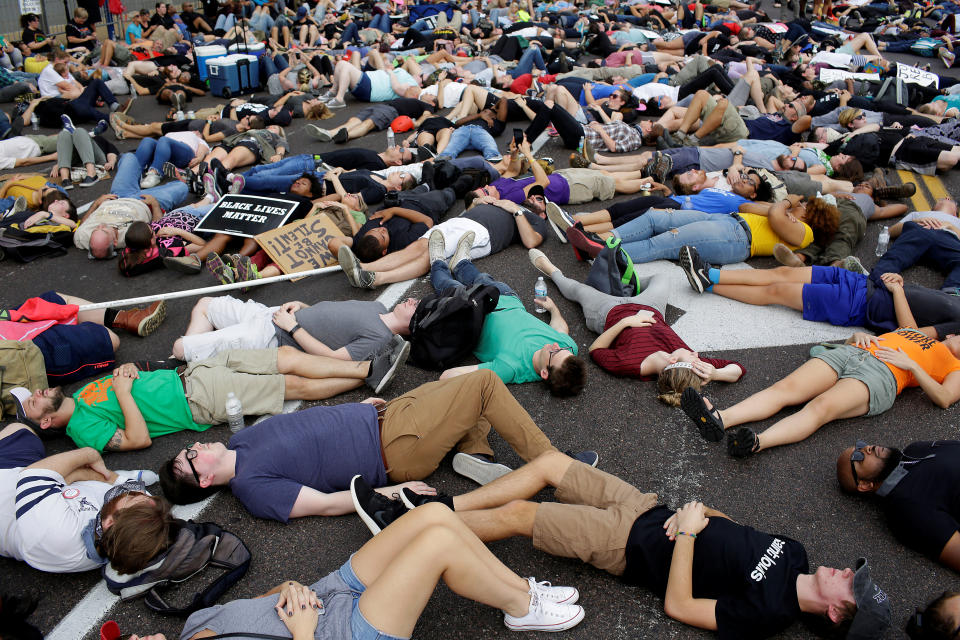
“The shooting that occurred in Ferguson might have occurred in any range of suburban areas in the U.S.,” said Rosenfeld, arguing that, if not for Ferguson, the fallout from the Stockley case would not likely have made national headlines.
“There’s no question, the spotlight is on St. Louis because Ferguson, for whatever reason, figured as the first major [police shooting] that generated considerable community unrest,” he said. “The St. Louis area has been tagged as a place that may be particularly prone to these kinds of incidents, but I think that’s simply because the Ferguson incident generated widespread unrest.”
Chasnoff agreed, noting that the so-called Ferguson effect not only has drawn more national attention to police violence in St. Louis, but has affected how the local community responds to such incidents.
“We have a heightened awareness … and hypersensitivity to issues here after Ferguson,” Chasnoff said. “We’re more organized and we’re more frustrated.”
Read more from Yahoo News:



